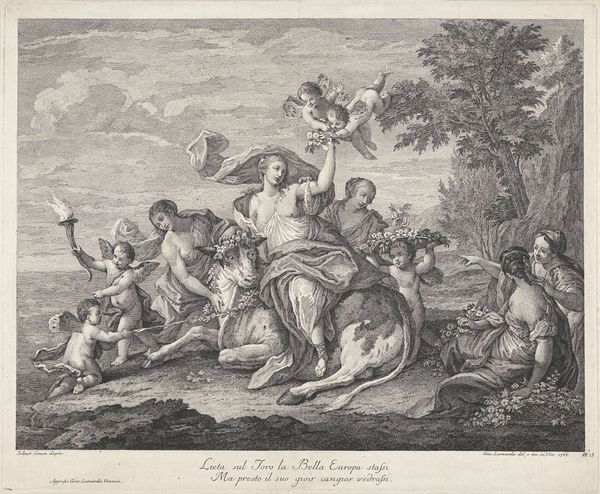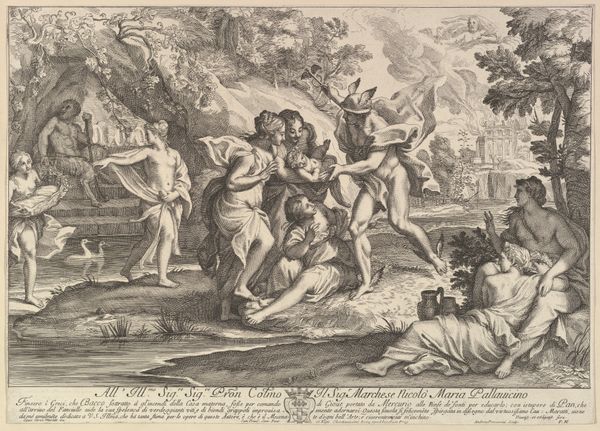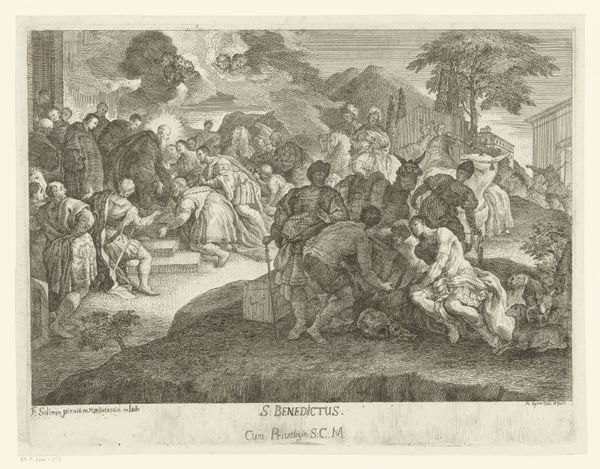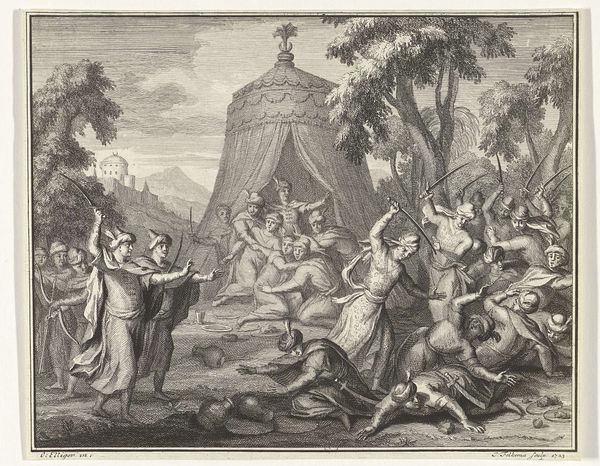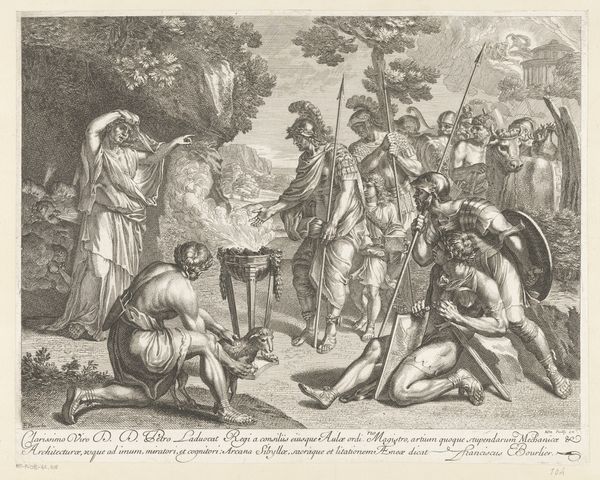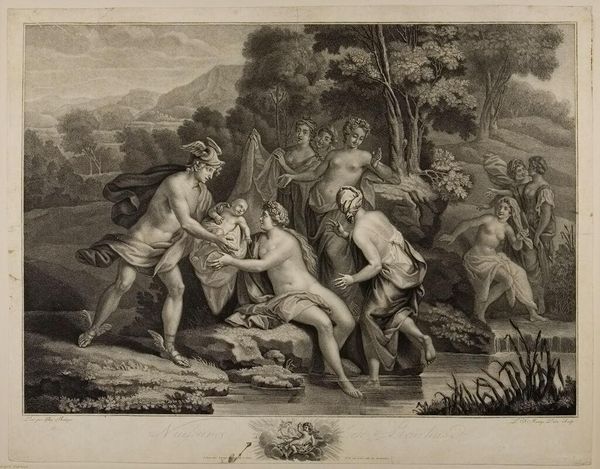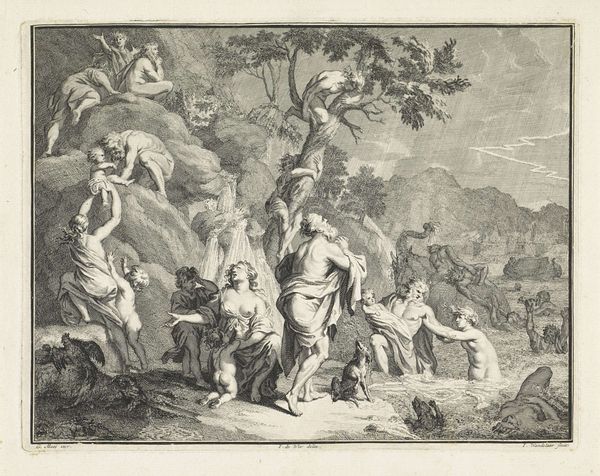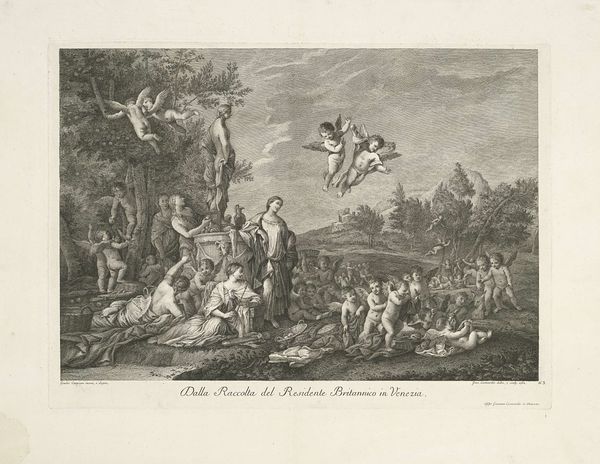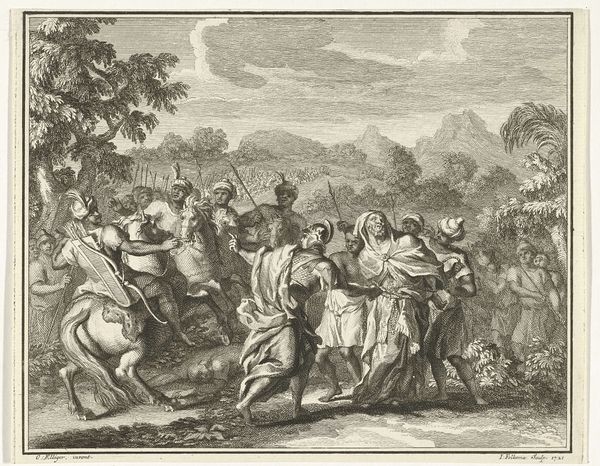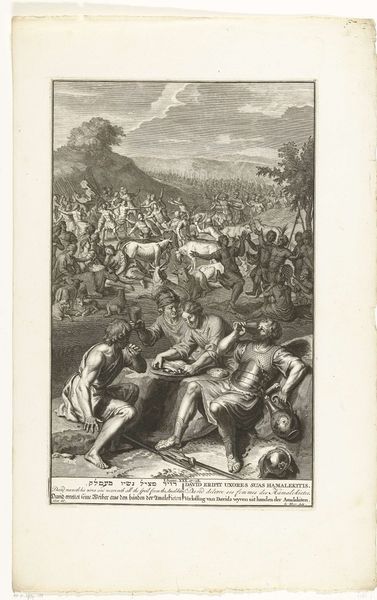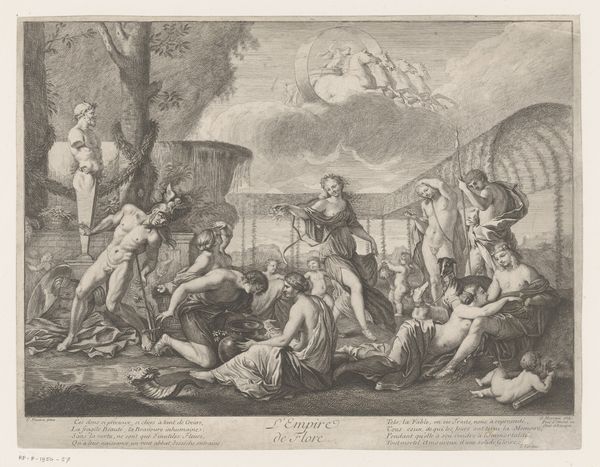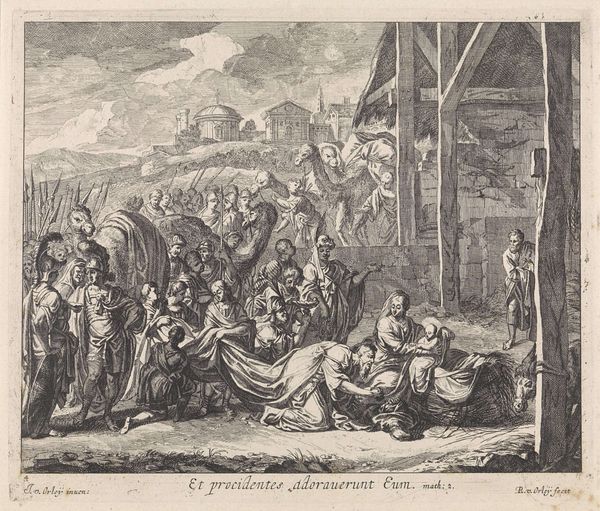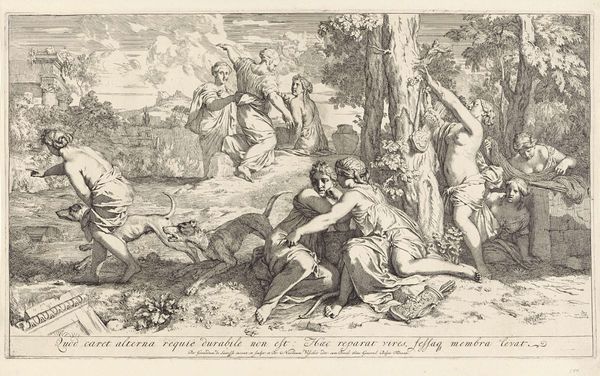
engraving
#
baroque
#
pen drawing
#
figuration
#
genre-painting
#
history-painting
#
engraving
Dimensions: height 206 mm, width 335 mm
Copyright: Rijks Museum: Open Domain
Curator: This is Bernard Picart's "Death of Orpheus," an engraving created around 1724, now held at the Rijksmuseum. It depicts a frenzied scene, doesn't it? Editor: It's unsettling, like a chaotic fever dream. The frenetic energy almost vibrates off the paper, especially given the… celebratory mood? Curator: Precisely! The Bacchae, or Maenads – the female followers of Dionysus – are shown in a drunken, violent revelry, tearing Orpheus apart. The scene visually connects to ecstatic cult practices and the loss of rational self-control. We can trace this particular depiction back through multiple eras in art, always carrying these potent themes. Editor: The contrast is stark, though. The foreground figures are almost nonchalant, lounging and cooing at babies, oblivious, or maybe complicit, to the horror unfolding behind them. Curator: That positioning creates a psychological tension. It challenges viewers to contemplate the many layers of participation in these historical and mythical events. Are these women participants, instigators, or merely indifferent observers, like the passive viewers of modern atrocities? Editor: And it speaks to the cyclical nature of history. Even amidst chaos and cruelty, life, symbolized by the children, goes on. It makes me wonder, are the romanticized figures simply disconnected, or is this how the subconscious represses inconvenient truths? Curator: The composition indeed presents an unsettling paradox. Orpheus, known for his lyre and ability to charm all living things, is now undone, ironically by those living things overtaken by unreason. It is the ultimate loss of control: nature turns against harmony. The Bacchae and their association with Dionysus would certainly be recognized as allegories of religious ecstacy for educated viewers of Picart's era. Editor: There's also something unsettling about the medium itself. An engraving, with its precise lines and calculated execution, seems a strange choice for depicting such unrestrained violence. But maybe that’s the point, the sharp lines etch the horror more indelibly in our minds. Curator: Indeed, the permanence contrasts brilliantly with the ephemeral state of frenzied mania shown in the moment. Picart creates tension between the medium itself and its chaotic message. It's thought-provoking, showing how symbols can transform and echo down the centuries, always questioning our human ability for beauty and cruelty. Editor: Absolutely, I think I’ll need to carry that question with me a little while longer today.
Comments
No comments
Be the first to comment and join the conversation on the ultimate creative platform.
